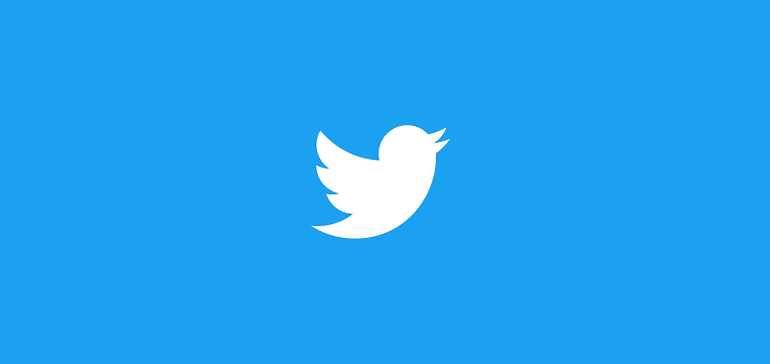SOCIAL
Twitter Adds 12 Million More Users, Posts Weaker Revenue Result Amid Pending Takeover by Elon Musk

Twitter has shared its latest performance update, and with the Elon Musk takeover pending, it’s a much more transactional affair this time around, versus its usual quarterly reports.
As per Twitter:
“In light of the proposed transaction with Mr. Musk, as is customary during the pendency of an acquisition, Twitter will not be hosting a conference call, issuing a shareholder letter, or providing financial guidance in conjunction with its first quarter 2022 earnings release. For further detail and discussion of our financial performance please refer to our upcoming quarterly report on Form 10-Q for the quarter ended March 31, 2022.”
That also means no graphics displaying Twitter’s performance, just raw numbers, in text form, which is a little less interesting, though the data remains the same.
First off, looking at usage, Twitter’s average monetizable daily active user count is now at 229 million, up from 217 million in Q4. That’s actually far better growth momentum than it has seen in the last two reports, with 12 million more users coming to Twitter in the period.
That’s also despite Twitter being banned in Russia amid the invasion of Ukraine – while it also comes despite Twitter admitting that it had been miscounting its mDAU stats for two years due to an oversight on its behalf.
“In March of 2019, we launched a feature that allowed people to link multiple separate accounts together in order to conveniently switch between accounts. An error was made at that time, such that actions taken via the primary account resulted in all linked accounts being counted as mDAU. This resulted in an overstatement of mDAU from Q1’19 through Q4’21.”
Twitter’s also provided an overview of exactly how far off its mDAU counts have been as a result.

So it was overstating its user counts by around 2 million, on average, due to the error. Which in most other circumstances would be a bigger issue, but right now, Twitter being where it is, it’s not a major story, with the pending Musk takeover eclipsing pretty much everything else.
On the revenue front, Twitter brought in $1.2 billion for the quarter, a 16% year-over-year increase, which is down on expectations. Some of that has been impacted by the war in Ukraine, but even then, you can see from this chart how $1.2 for Q1 is not shifting the needle in any major way for the app.

Twitter also notes that subscription and other revenue (including data licensing) totaled $94 million, which is a decrease of 31% year-over-year. That would suggest that new options like Twitter Blue are not gaining any really any traction as yet, and may not end up developing into the supplementary income streams that Twitter might have hoped.
Twitter also notes that given the pending acquisition by Musk, it’s not providing any forward looking guidance, and it’s withdrawing all previously provided goals and outlook.
I mean, really, what do you say about Twitter’s progress, and its potential for the future?
Again, it has continued to add users, though not at what would be considered ‘strong’ growth rates, while its attempts at product enhancements and improvements haven’t really shifted the needle, with the percentage of relative increase over time remaining largely unchanged.
Despite being the platform of choice for the former President, Twitter couldn’t make itself a more essential app, and despite trying out Stories and adding new subscription tools, it’s not changing its perception, at least not in any major way.
So what can Twitter to do get more people logging in more often, and spending more time engaging within the tweet stream?
A lot of it, at least in my experience, comes down to its algorithms, and highlighting the most relevant content to each individual user. Despite having a heap of data to go on, with over 500 million tweets sent every day, Twitter has never been great at translating those insights into a more engaging, compulsive tweet experience.
The Spaces tab is the best example right now – tap across to the Spaces display and you’ll see a raft of in-progress broadcasts, which, unless you’re really into crypto and/or NFTs, probably aren’t heavily aligned with your interests.
Part of the issue here is the content available – Twitter can’t show you Spaces that aren’t happening – but you can expand this also to Topic recommendations, People to Follow, the Explore tab, live-streams, etc.
Twitter has the content – again, 500 million tweets are being created every day – but it’s never been able to show you a compulsive stream of content, matched to your personal interests. Which is what TikTok does so well, and what other platforms have generally been better at. Twitter still needs to work on this, which also means that it needs to filter out the bots that flood trending streams, which can also dilute the quality of the tweet experience.
Can Elon fix this? He seems to think that he can, but whether Musk’s approach works, or is workable for the app, remains to be seen.
Becoming the platform of ‘free speech’ is something that many users will gleefully support, but how that looks in reality, at a time when every other social network is now taking its obligations even more seriously on this front, is also an unknown factor.
Essentially, Twitter is in an increasingly difficult position – it either sticks to its guns, and pushes ahead on its slow, but arguably steady path, or it takes more radical action in the hopes of ignoring more interest.
Which path is best? We’ll soon find out.
SOCIAL
Snapchat Explores New Messaging Retention Feature: A Game-Changer or Risky Move?

In a recent announcement, Snapchat revealed a groundbreaking update that challenges its traditional design ethos. The platform is experimenting with an option that allows users to defy the 24-hour auto-delete rule, a feature synonymous with Snapchat’s ephemeral messaging model.
The proposed change aims to introduce a “Never delete” option in messaging retention settings, aligning Snapchat more closely with conventional messaging apps. While this move may blur Snapchat’s distinctive selling point, Snap appears convinced of its necessity.
According to Snap, the decision stems from user feedback and a commitment to innovation based on user needs. The company aims to provide greater flexibility and control over conversations, catering to the preferences of its community.
Currently undergoing trials in select markets, the new feature empowers users to adjust retention settings on a conversation-by-conversation basis. Flexibility remains paramount, with participants able to modify settings within chats and receive in-chat notifications to ensure transparency.
Snapchat underscores that the default auto-delete feature will persist, reinforcing its design philosophy centered on ephemerality. However, with the app gaining traction as a primary messaging platform, the option offers users a means to preserve longer chat histories.
The update marks a pivotal moment for Snapchat, renowned for its disappearing message premise, especially popular among younger demographics. Retaining this focus has been pivotal to Snapchat’s identity, but the shift suggests a broader strategy aimed at diversifying its user base.
This strategy may appeal particularly to older demographics, potentially extending Snapchat’s relevance as users age. By emulating features of conventional messaging platforms, Snapchat seeks to enhance its appeal and broaden its reach.
Yet, the introduction of message retention poses questions about Snapchat’s uniqueness. While addressing user demands, the risk of diluting Snapchat’s distinctiveness looms large.
As Snapchat ventures into uncharted territory, the outcome of this experiment remains uncertain. Will message retention propel Snapchat to new heights, or will it compromise the platform’s uniqueness?
Only time will tell.
SOCIAL
Catering to specific audience boosts your business, says accountant turned coach

While it is tempting to try to appeal to a broad audience, the founder of alcohol-free coaching service Just the Tonic, Sandra Parker, believes the best thing you can do for your business is focus on your niche. Here’s how she did just that.
When running a business, reaching out to as many clients as possible can be tempting. But it also risks making your marketing “too generic,” warns Sandra Parker, the founder of Just The Tonic Coaching.
“From the very start of my business, I knew exactly who I could help and who I couldn’t,” Parker told My Biggest Lessons.
Parker struggled with alcohol dependence as a young professional. Today, her business targets high-achieving individuals who face challenges similar to those she had early in her career.
“I understand their frustrations, I understand their fears, and I understand their coping mechanisms and the stories they’re telling themselves,” Parker said. “Because of that, I’m able to market very effectively, to speak in a language that they understand, and am able to reach them.”Â
“I believe that it’s really important that you know exactly who your customer or your client is, and you target them, and you resist the temptation to make your marketing too generic to try and reach everyone,” she explained.
“If you speak specifically to your target clients, you will reach them, and I believe that’s the way that you’re going to be more successful.
Watch the video for more of Sandra Parker’s biggest lessons.
SOCIAL
Instagram Tests Live-Stream Games to Enhance Engagement

Instagram’s testing out some new options to help spice up your live-streams in the app, with some live broadcasters now able to select a game that they can play with viewers in-stream.
As you can see in these example screens, posted by Ahmed Ghanem, some creators now have the option to play either “This or That”, a question and answer prompt that you can share with your viewers, or “Trivia”, to generate more engagement within your IG live-streams.
That could be a simple way to spark more conversation and interaction, which could then lead into further engagement opportunities from your live audience.
Meta’s been exploring more ways to make live-streaming a bigger consideration for IG creators, with a view to live-streams potentially catching on with more users.
That includes the gradual expansion of its “Stars” live-stream donation program, giving more creators in more regions a means to accept donations from live-stream viewers, while back in December, Instagram also added some new options to make it easier to go live using third-party tools via desktop PCs.
Live streaming has been a major shift in China, where shopping live-streams, in particular, have led to massive opportunities for streaming platforms. They haven’t caught on in the same way in Western regions, but as TikTok and YouTube look to push live-stream adoption, there is still a chance that they will become a much bigger element in future.
Which is why IG is also trying to stay in touch, and add more ways for its creators to engage via streams. Live-stream games is another element within this, which could make this a better community-building, and potentially sales-driving option.
We’ve asked Instagram for more information on this test, and we’ll update this post if/when we hear back.
-

 SEO7 days ago
SEO7 days agoGoogle Limits News Links In California Over Proposed ‘Link Tax’ Law
-

 SEARCHENGINES6 days ago
SEARCHENGINES6 days agoGoogle Core Update Volatility, Helpful Content Update Gone, Dangerous Google Search Results & Google Ads Confusion
-

 SEO6 days ago
SEO6 days ago10 Paid Search & PPC Planning Best Practices
-

 MARKETING7 days ago
MARKETING7 days ago2 Ways to Take Back the Power in Your Business: Part 2
-

 MARKETING5 days ago
MARKETING5 days ago5 Psychological Tactics to Write Better Emails
-

 SEARCHENGINES5 days ago
SEARCHENGINES5 days agoWeekend Google Core Ranking Volatility
-

 PPC7 days ago
PPC7 days agoCritical Display Error in Brand Safety Metrics On Twitter/X Corrected
-

 MARKETING6 days ago
MARKETING6 days agoThe power of program management in martech












You must be logged in to post a comment Login